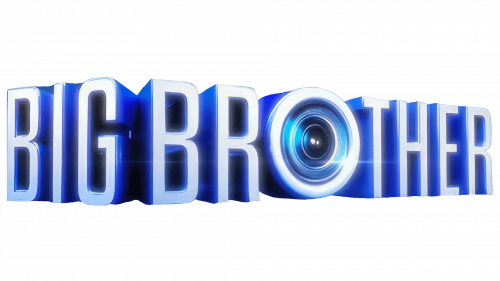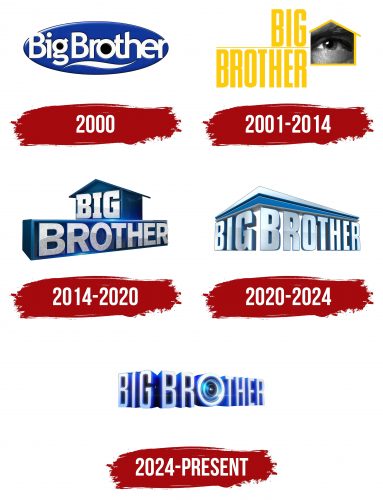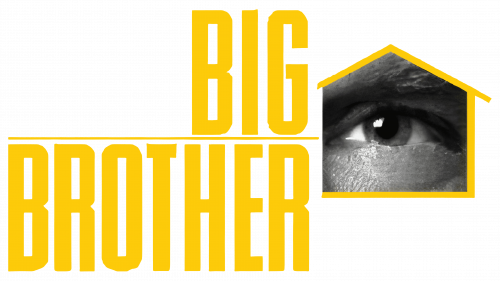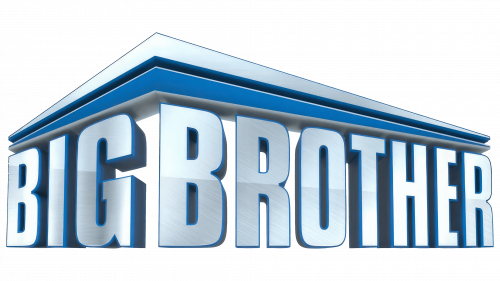The Big Brother logo tells the story of life under constant surveillance, where viewers can glimpse into the house’s inner world and its inhabitants. The emblem contains a subtle reference to the place that becomes the central stage for all events and episodes of the show. The house, as a key element, takes center stage. This house symbolizes the foundation of each episode, where important moments occur, intrigues unfold, and relationships between participants are revealed.
Big Brother: Brand overview
The history of “Big Brother,” one of the longest-running reality TV shows, began in 1997 when Dutch media mogul John de Mol and his production company, Endemol, developed the concept. The idea was simple: place a group of strangers in a house isolated from the outside world, where cameras and microphones would capture their every move 24/7.
The show’s title, “Big Brother,” was inspired by George Orwell’s novel 1984, in which an omnipresent authority figure watches over citizens. In the show’s context, it symbolizes the constant surveillance of contestants.
The show’s first season premiered on September 16, 1999, on the Veronica channel in the Netherlands. It became an instant hit, attracting millions of viewers nightly. Due to its success, the format quickly spread worldwide.
By 2000, the program had debuted in countries such as Argentina, the United States, the United Kingdom, Germany, and Spain. The premise was the same in each version: contestants lived together, completed tasks, and nominated each other for eviction, with viewers voting on who should leave the house.
In the U.S., the show premiered on CBS on July 5, 2000. However, the format was significantly altered for American audiences. Unlike the European versions, where viewers decided who to evict, the U.S. version gave the contestants the power to vote each other out. This change introduced more complex strategies and alliances.
In the United Kingdom, the show became a cultural phenomenon. When it premiered on Channel 4 in 2000, it sparked widespread debate and drew large audiences. The show ran on Channel 4 until 2010. Channel 5 picked it up.
In 2001, Australia, Russia, and several other countries launched their versions of the show. By this point, the format had been adapted in more than 50 countries, cementing its global appeal.
The UK introduced a celebrity version of the show in 2002, featuring famous personalities instead of ordinary contestants. This spin-off became popular and was adopted by other nations as well.
The U.S. version added the “Power of Veto” in 2003, allowing contestants to save themselves or others from eviction, adding a new strategic layer to the game.
In 2004, the UK made headlines when trans contestant Nadia Almada won the show, sparking discussions about gender identity. Meanwhile, the U.S. introduced an all-stars season in 2006, bringing back fan-favorite contestants from previous seasons.
Controversy hit the celebrity edition in the UK in 2007 when allegations of racism against Indian actress Shilpa Shetty caused a massive public outcry and record complaints from viewers.
The U.S. version introduced the “Have-Nots” twist in 2009, where certain contestants lived under harsh conditions as part of the competition. In the UK, Channel 5 took over the series from Channel 4 in 2011, bringing a refreshed format and audience.
In 2013, the Canadian edition introduced the “Instant Eviction” twist, allowing a contestant to be evicted without the usual nomination and voting process.
In 2016, an exclusive online version of the show premiered in the U.S., available on CBS’s streaming service.
The American celebrity version premiered in 2018, timed to air alongside the Winter Olympics.
By 2020, the format remained a staple of reality TV across many countries despite competing with newer reality shows. Various adaptations continued to evolve with new rules and twists to keep viewers engaged.
In 2021 and 2022, the show continued to entertain audiences in multiple countries, making adjustments to stay relevant in the ever-changing television landscape.
By 2023, the reality show remained one of the most successful and enduring formats, captivating audiences worldwide with its blend of social experiments, strategy, and drama.
Meaning and History
What is Big Brother?
This innovative reality show has captured viewers’ attention worldwide due to its unique social experiment structure. A group of strangers lives together in a specially designed house, completely isolated from the outside world, and is under constant surveillance by cameras and microphones. The show captures the participants’ interactions, friendships, rivalries, and strategies as they compete for a large cash prize. The show’s name is inspired by George Orwell’s novel “1984,” alluding to the continuous surveillance of the participants. A distinctive feature of the program is its interactive element, allowing viewers to influence the events by voting on tasks or creating unexpected twists.
2000
The reality show in America debuted in 2000, and its first logo looked quite harmonious. The oval smooth edges symbolize the aim for peaceful coexistence among a group of people in a confined space. Inside the oval is the show’s name, written in white letters. This color signifies the novelty and the first broadcast of the program. The inner spaces of the letters, especially those with round elements, are left empty. This creates the impression of eyes, behind which observers are hidden. After all, the show’s main point is the constant filming of participants 24 hours a day, with privacy only granted in the bathroom. The hollow spaces within the letters hint at the camera lenses that track every move of the participants.
The show’s name is chosen in analogy with authorities watching over people. In America, “Big Brother” often refers to organizations like the government, CIA, or FBI. This term traces back to the famous work of author George Orwell, where the idea of total surveillance gained widespread recognition.
The smooth line at the bottom of the logo resembles either the profile of a sheet of paper or a feather. This element symbolizes the signing of the contract that participants enter upon joining the house. The contract includes the possibility of winning a large sum if they succeed.
Additionally, the text is somewhat cramped for the space allotted and almost extends beyond the oval’s boundaries. This intentional design choice highlights the gradual elimination of participants who failed to fit in the house.
2001 – 2014
By the second season, the logo was updated, gaining a more modern and expressive look. The central element became a yellow line outlining the shape of a house, inside which is depicted the eye of an observing person. This element perfectly conveys the essence of the reality show, where the participants’ lives are under constant surveillance as if they exist behind glass. The eye within the outline emphasizes the constant observation, symbolizing the all-seeing presence of cameras that capture every movement.
The show’s name is written in large capital letters to the left of the image. This design uses two levels of text, highlighting the presence of multiple floors in the house where the show’s events unfold. This division reflects the spatial structure of the house itself and adds visual balance to the composition.
The bright yellow color used in the logo gives the show a light and entertaining tone, creating a sense of fun and liveliness. It hints at the improvement of the program’s format, especially after the first season, which was met with criticism from both critics and viewers. The updated design symbolizes an effort to transform the show, making it more attractive and dynamic, highlighting its new energy and vibrancy.
2014 – 2020
After the release of the 500th episode and by the 16th season, the emblem was updated, undergoing significant changes. The logo now appears as a three-dimensional house, which has become the main symbol of the show. Under the roof, the word “Big” is placed in the upper part, and on the lower level, “Brother.” Both parts of the name are in three-dimensional silver letters that look as if they are cut from precious metal. This design choice gives the logo a sense of weight and significance, reflecting the prestige of the show and its many years on the air.
The silver letters, as if made from metal, symbolize the program’s resilience and longevity and the substantial monetary prize awaiting the winner at the end of each season. This emphasis on the material aspect makes the connection to the value of the prize more apparent.
The emblem focuses on the house as the central event arena, highlighting its key role in the show’s structure. Unlike previous versions, there is no clear analogy to observation, which also suggests a shift in focus to the events inside the house rather than external surveillance. The updated logo conveys the project’s long history, emphasizing its popularity and viewers’ love over the years.
2020 – 2024
The new logo has become a symbol of change, and its design instantly captures attention. The house on the visual emblem is turned at an angle toward the viewers, allowing them to see two of its walls as if offering a new perspective on something familiar. Each wall contains one word of the title, creating a sense of structure and unity. This element emphasizes the solidity of the show, which has been on air for 20 years. The composition is topped with two roof panels, giving the image a complete and monumental feel.
The logo conveys a sense of significance, as the project has become iconic over the years. The shades of silver dominating the color scheme highlight the rule changes and a fresh chapter in the program’s evolution and lend the identity a sense of prestige and stability. Blue in the design remains an important accent, complementing the main palette and making the overall look more stylish and modern.
2024 – today
The modern version of the Big Brother emblem has undergone significant changes and acquired a futuristic look that captures attention. This new design clearly emphasizes the show’s long-term plans and its drive for innovation. The logo hints at the incorporation of technology and the role of artificial intelligence, as if smart machines actively contributed to the design of the house and the games themselves. It suggests even more possibilities for the show’s future development.
The show’s title on the visual sign is now angled, which interestingly echoes the lines of the house’s walls, though the house itself is not depicted directly. The letters appear metallic, adding a sense of strength and technological sophistication to the logo, creating an impression of high status and durability. They seem to be cast in steel, reflecting light and emphasizing the project’s significance. The words are illuminated by bright light, as if spotlights are directed at them, enhancing the sense of focus and close attention from viewers and participants. The emblem signals that the show is always in the spotlight.
The most notable feature is the letter “O,” which has been transformed into a symbol resembling a camera lens. This subtle detail symbolizes surveillance and constant observation, perfectly reflecting the show’s essence, where the participants’ lives are under the cameras’ watchful eyes. This element adds dynamism and highlights that every moment of the show is carefully recorded and transmitted to the audience.
The updated logo maintains tradition while sending a clear message about the future and technological progress, emphasizing the importance of using the latest technologies in the game.









